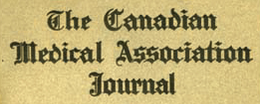
NYU Polytechnic School of Engineering professors have been collaborating with researchers from Peking University on a new test strip that is demonstrating great potential for the early detection of certain heart attacks.
Kurt H. Becker, a professor in the Department of Applied Physics and the Department of Mechanical and Aerospace Engineering, and WeiDong Zhu, a research associate professor in the Department of Mechanical and Aerospace Engineering, are helping develop a new colloidal gold test strip for cardiac troponin I (cTn-I) detection. The new strip uses microplasma-generated gold nanoparticles (AuNPs) and shows much higher detection sensitivity than conventional test strips. The new cTn-I test is based on the specific immune-chemical reactions between antigen and antibody on immunochromatographic test strips using AuNPs.
Compared to AuNPs produced by traditional chemical methods, the surfaces of the gold nanoparticles generated by the microplasma-induced liquid chemical process attract more antibodies, which results in significantly higher detection sensitivity.
cTn-I is a specific marker for myocardial infarction. The cTn-I level in patients experiencing myocardial infarction is several thousand times higher than in healthy people. The early detection of cTn-I is therefore a key factor of heart attack diagnosis and therapy.
The use of microplasmas to generate AuNP is yet another application of the microplasma technology developed by Becker and Zhu. Microplasmas have been used successfully in dental applications (improved bonding, tooth whitening, root canal disinfection), biological decontamination (inactivation of microorganisms and biofilms), and disinfection and preservation of fresh fruits and vegetables.
The microplasma-assisted synthesis of AuNPs has great potential for other biomedical and therapeutic applications such as tumor detection, cancer imaging, drug delivery, and treatment of degenerative diseases such as Alzheimer’s.
The routine use of gold nanoparticles in therapy and disease detection in patients is still years away: longer for therapeutic applications and shorter for biosensors. The biggest hurdle to overcome is the fact that the synthesis of monodisperse, size-controlled gold nanoparticles, even using microplasmas, is still a costly, time-consuming, and labor-intensive process, which limits their use currently to small-scale clinical studies, Becker explained.
Adapted by MNT from original media release
http://www.medicalnewstoday.com/releases/288143.php
 Get to know Interventional Cardiologist Dr. David Alphonso Hector, II, who serves the population of Tyler, Texas.
Get to know Interventional Cardiologist Dr. David Alphonso Hector, II, who serves the population of Tyler, Texas.






